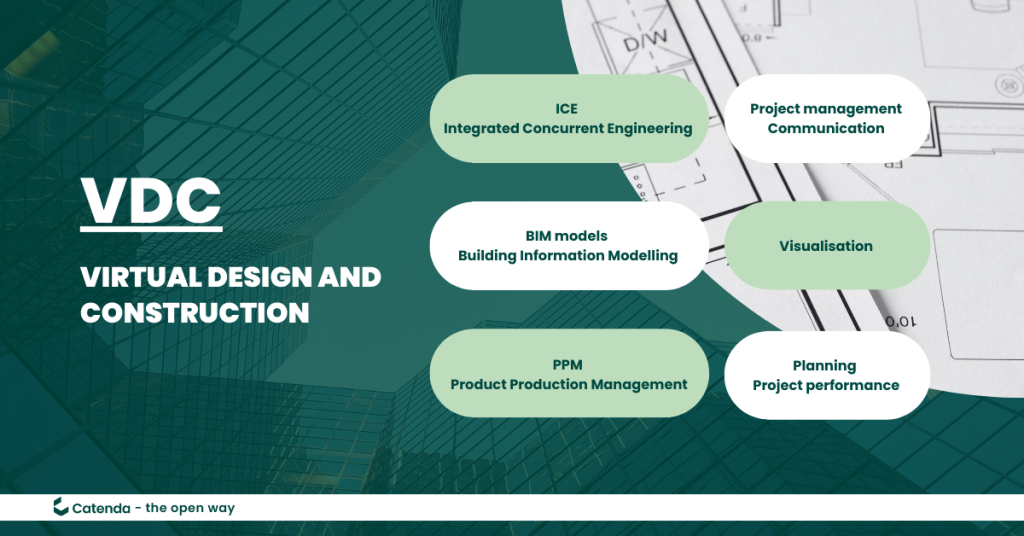What does VDC stand for in construction?
VDC is a short form of Virtual Design and Construction. The concept was first discussed in the Center for Integrated Facility Engineering at Stanford University by Professor Martin Fischer. VDC is now used widely by construction firms in many countries and regions around the world.

Virtual design and construction definition
Virtual Design and Construction methodology is the use of integrated multi-disciplinary performance models of design and construction projects to support business objectives, according to Professors Martin Fischer and John Kunz.
The “Virtual” method brings a new and modern perspective to construction, creating a digital twin of the project before actual construction begins. This means planning and building the project virtually before any physical work starts construction sites.
Although the name suggests a focus on designers and contractors, Virtual Design and Construction (VDC) has a broader impact, influencing the entire project life cycle. VDC involves making a digital twin during the design and construction phases, serving as a valuable tool for using the digital model correctly.
VDC itself reflects the capabilities of providing business solutions from start to finish. VDC can contribute to identifying client’s desired outcomes and effectively coordinating and guiding them to make important decisions and meet ultimate objectives.
In the AECO industry, VDC is used as a combination of techniques and tools. including ICE (Integrated Concurrent Engineering) meetings, BIM models (Building Information Modelling), and PPM (Product Production Management).
What are the benefits of VDC for architects and construction companies?
Built on the three strong key elements, the VDC methodology enhances quality and delivers substantial benefits to architects and construction companies within the construction industry.
- ICE system facilitates effective project managing and simultaneous communication, resulting in less lengthy delays, less errors, better clash detection, risk management and cooperation.
- PPM ensures better construction plans and improved project quality & performance by determining clearly the objectives and situations that could happen. By doing so, project teams can save time and money, anticipate potential hazards and concentrate resources on important aspects from the very first stages of the construction process.
- BIM helps visualize the whole project in digital models and detailed 3D models, which allows all parties and stakeholders to clearly and quickly exchange and capture information and data.
VDC is based on the interaction and the coordination of different stakeholders through a strategic working process. Despite being complex at first glance, VDC methodology is an innovative approach for not only experts but everyone in the project.
What is the difference between VDC and BIM?
While VDC and BIM are often used interchangeably, they denote different aspects of the construction process and workflow.
BIM, or Building Information Modeling, refers to the digital representation of physical and functional characteristics of a facility. BIM supports decision-making processes by facilitating clear communication of design issues to the project team or the customer, employing formats like BCF and utilizing BIM collaboration tools. Additionally, owing to the inclusion of schedule information, such as 4D, BIM plays a key role in construction planning.
On the other hand, VDC stands for Virtual Design and Construction, which is a management concept. It is a broader term that involves the use of various technologies, construction processes, and methodologies, including BIM, to improve project outcomes.
Key differences include:
- BIM is more focused on the creation and use of the 3D or 4D building model, while VDC is more concerned with the management and application of the model throughout the project lifecycle.
- BIM is a process, while VDC is a management strategy.



